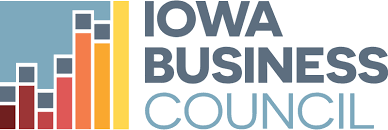What will happen to the local economy in 2023?
Business Record readers give their forecasts

Business Record Staff Jan 16, 2023 | 5:03 pm
5 min read time
1,237 wordsBusiness Record Insider, Economic DevelopmentEach year we give our audience the chance to weigh in on what they think the year will hold for Iowa’s economy. Business leaders’ predictions for 2023 were mixed. In this year’s economic outlook survey, we heard that many leaders think the economic environment will get slightly worse while others feel gains and losses will be in equal supply, keeping the state at its current level of activity. The outlook is not necessarily pessimistic, though it does seem more tilted toward regression than in years past.
Readers’ comments give you a picture of how the economy might affect their industry and also what they feel is the biggest threat to the state. The 2023 results of the survey, in its 12th year, are not scientific but paint a picture of what other leaders think as you make plans for your own business.
In 2023, Business Record readers believe the Iowa economy will …
5: Improve dramatically: 0%
4: Improve slightly: 25%
3: Stay the same: 31%
2: Regress slightly: 38%
1: Regress dramatically: 6%
Here’s some of what we heard. Responses have been edited for clarity.
Jay Byers, president and CEO, Greater Des Moines Partnership
4: Improve slightly
The Greater Des Moines Partnership has a robust list of economic development projects that we are working to advance with our regional partners in 2023. There are also a number of game-changing community development projects across the region that continue to move forward, including the ICON Water Trails, the DSM International Airport terminal and the Pro Iowa Soccer Stadium and Global Plaza. Our region will continue to re-imagine our collective future with bold, innovative ideas through the Downtown DSM Future Forward and the Capital Crossroads 3.0 vision plans.
Biggest threat: The biggest challenge for the Iowa economy continues to be attracting, retaining and skilling up talent.
Kim Grzywacz, sales director, CIT Signature Transportation
4: Improve slightly
Our industry is still recovering from the pandemic years. Due to reduced fleet and lack of CDL [commercial driver’s license] drivers, demand will exceed the capacity of companies.
Biggest threat: Inflationary costs will change how Iowans spend what is left of their discretionary money.
Carol Olson, state director, U.S. Sen. Chuck Grassley
4: Improve slightly
I work in government, which is funded by tax revenue. Expecting revenue to be stable.
Biggest threat: Labor shortages and inflation.
Connie Wimer, chairman, Business Publications Corp.
4: Improve slightly
Because of increased costs we will remain static as far as profits go.
Biggest threat: The Legislature and the laws they pass.
Michelle Book, CEO, Food Bank of Iowa
3: Stay the same
Prices will flatten but not recede dramatically; nor will wages increase significantly. Food insecurity will remain at historic levels with many workers unable to cover the cost of basic needs.
Biggest threat: With rural Iowa having been robbed of all available talent, access to workforce will continue to be the biggest threat to growth. As states go, Iowa is a leading exporter of college graduates to surrounding states with more affordable housing and higher wages.
Jessica Dunker, president and CEO, Iowa Restaurant Association
3: Stay the same
For the first time ever, the restaurant industry is experiencing a simultaneous 15% increase in the cost of goods and cost of labor. That coupled with high consumer inflation will make it difficult to be profitable. We will have sales, but not necessarily profit.
Biggest threat: Inflation will continue to negatively affect discretionary spending in restaurant, tourism, travel and retail businesses.
Steven Dust, managing director/principal, Waterfront Corporate Services LLC
3: Stay the same
My business will grow with an increased need for new strategies for growth in volatile economic conditions.
Biggest threat: Decreased manufacturing profits and decreased ag/farm earnings from higher input prices, and perhaps decreased ag asset values.
Allison Streu, general manager and area director of operations, Aparium Hotel Group/Surety Hotel Des Moines
3: Stay the same
Despite an economic slowdown, the hotel demand is expected to increase next year driven by pent-up demand in group, business travel and international travel that will continue to drive year-over-year growth. Remote and hybrid work trends are also driving new travel demand. Pricing power for hotel rooms remains challenging driven by continued robust leisure travel and the large amount of hotel supply in the market. Consumers are shifting their spending from goods and products to services and experiences, including experiences when traveling. Consumers are looking for package values and discounts on stays.
Biggest threat: If the economy weakens, employers will be forced to downsize. Employees in the hotel lodging industry are particularly at risk if room cancellations rise and business travel demand doesn’t recover to 70% of 2019 levels. Demand is unknown and hotels are finding it challenging to increase pricing year over year. The industry needs continued growth and forward momentum to have a successful 2023. While inflation and “the likely recession” remain a risk, companies predict travel demand will continue in 2023. Threats include hiring and retaining staff, change in marketing trends and dynamics, rising operational costs, change in guest expectations, and keeping up to date with data security. Staffing and labor concerns will most likely trickle into 2023 as hotels struggle with hiring and retaining staff, and more spending on contract labor is increasing labor costs.
Randy Worth, president, RLW Consulting
3: Stay the same
Opportunity for more business expansion is being held back by continued labor shortage.
Biggest threat: Labor.
Todd Kielkopf, president and strategy adviser, Kielkopf Advisory Services
2: Regress slightly
Modest reduction in riskier projects being financed by investors, small business owners and ag producers.
Biggest threat: Impact of today’s higher interest rates and tightening credit on both project feasibility and real estate valuations.
Josh Law, account executive, OnMedia
2: Regress slightly
Steady revenue instead of expected increases.
Biggest threat: The continued high prices of commercial real estate and the effect of anti-choice policies sending people and opportunities from the state.
Kevin Pokorny, owner and consultant, Pokorny Consulting
2: Regress slightly
Without Congress dealing with immigration, we will continue to see a shortage of workers. The political divisiveness will continue, which will negatively affect our economy and the markets. We may be in for some dark times.
Biggest threat: Continual shortage of workers and less tax revenue to the state that will affect public health and social service programs.
Mike Ralston, president, Iowa Association of Business and Industry
2: Regress slightly
Not a deep impact on manufacturing, the industry has been running hot in recent years. And it may take pressure off – slightly – the search for workers.
Biggest threat: Inflation and increased materials costs.
John Sorensen, president and CEO, Iowa Bankers Association
2: Regress slightly
It appears the Federal Reserve will continue tightening and keep interest rates higher through most of 2023. Eventually, this has to slow the pace of business activity and job growth. Even a mild recession would reduce demand for credit.
Biggest threat: Geopolitical events, often beyond our control, seem to pose the greatest threat. Having said that, these events often result in increased demand for a stable, reliable supplier – like Iowa’s farmers.
David Voss, principal, Slingshot Architecture
2: Regress slightly
Minimal impact unless interest rates continue to rise.
Biggest threat: Cost of labor will cause fees to rise.
Marcie Morrison, co-owner, Coldwell Banker
1: Regress dramatically
Interest rates, higher prices, gas prices and slowing of real estate all show regression.
Biggest threat: Ignoring the obvious.









